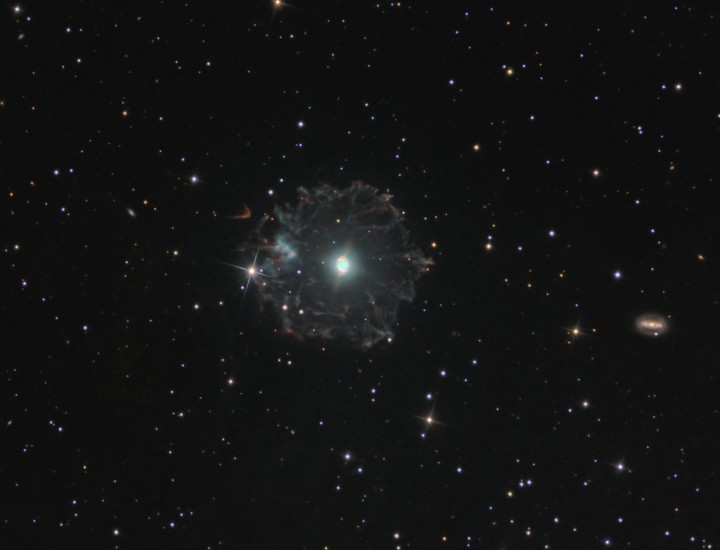 |
Астронет: Астрономическая картинка дня Кошачий глаз в ширину и глубину http://variable-stars.ru/db/msg/1222596/eng |
Credit & Copyright: Johannes Schedler
(Panther
Observatory)
Explanation:
The Cat's Eye Nebula
(NGC 6543) is one of the best known
planetary
nebulae in the sky.
Its more familiar outlines are seen in the
the brighter central region of
this impressive wide-angle view.
But the composite image also combines many
short and long exposures to reveal the nebula's
extremely faint halo.
At an estimated distance of 3,000 light-years, the
faint outer halo is over 5 light-years across.
Planetary
nebulae have long been appreciated as a final phase
in the life of a sun-like star.
More recently, some planetary nebulae are
found to have
halos like this one, likely formed of material shrugged off during
earlier episodes in the star's evolution.
While the planetary
nebula phase is thought to last for around 10,000 years,
astronomers estimate the age of the outer filamentary portions
of this halo to be 50,000 to 90,000 years.
Visible on the right, some 50 million light-years beyond
the Cat's Eye, lies spiral galaxy
NGC 6552.
Authors & editors:
Robert Nemiroff
(MTU) &
Jerry Bonnell
(USRA)
NASA Web Site Statements, Warnings,
and Disclaimers
NASA Official: Jay Norris.
Specific
rights apply.
A service of:
LHEA at
NASA /
GSFC
& Michigan Tech. U.
